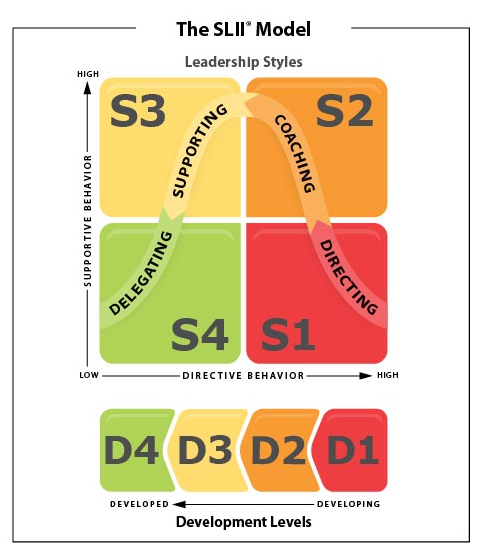Unless you?re part of a team of clones, you should stay away from one-size-fits-all models and take a contextual approach to leadership.
 Photo by Nick Fewings on Unsplash
Photo by Nick Fewings on Unsplash
Some years ago I was working in the online department of a medium-sized company, and our team had 12?15 people on average. I was involved in recruiting 5 colleagues, of which 2 were the only ones interviewed for those roles. Not because we didn?t have more applicants, but because we knew they were the right ones from the first minutes.
One of them had zero work experience, but the most beautiful and dedicated attitude I?ve ever seen in a candidate. I?ve interviewed her together with my manager, and we both agreed to hire her within 10 minutes of her leaving our office.
It?s more than 5 years since then, and I?m proud of what she became ?.
For a different role, I interviewed a candidate who lied in her CV. She had none of the experience that she listed there. She came to the interview because she needed advice on how to get into the field.
I?ve learned that in the first minutes of our talk, and decided to not waste her time. Since we both had reserved 30 minutes for an interview, we agreed that she was not a good fit, and I?ve used the rest of the time to give her direction and recommend learning resources.
It?s more than 5 years since then, and I still remember her thankful attitude at the end :).
For the same position, we then interviewed another candidate who seemed extremely tensed and hesitant, but technically skilled. We decided to hire her, although both me and my manager thought something wasn?t right. We ended up parting ways about 4 months after she was hired.
During her time in the company, we?ve had on average two one-to-one talks per week. She needed them because of her life context. I didn?t know how to help her, but I sat there and listened. I offered solutions, in the most human words I could find.
She needed more than that, and we ended up letting her go. It was the only option for the company, although not the best situation for her.
It?s more than 5 years since then, and I wish I could have done more.
None of these colleagues called me a ?manager?, not even a ?team lead?. From the first day of their onboarding, I?ve asked them to consider me a regular colleague. I was in no way ?more? than them, and I didn?t need titles.
With each of them, I tried to be what they needed me to be. And sometimes, that was different than what they wanted me to be.
That?s the principle that the Situational Leadership model is built on. Unless you lead a team of clones, you can?t apply a one-size-fits-all leadership model with all your colleagues.
This model was introduced by Ken Blanchard and Ralph Hersey somewhere in the early ?70s, in their book Management of Organizational Behavior. During the early ?80s, the two authors developed the theory further and added new nuances; Blanchard introduced the one-minute management style, and Hersey focused on refining the Situational Leadership theory.
How does Situational Leadership work?
Unlike other leadership models, this theory focuses not only on the leader, but also on the learner or follower. There are four types of leaders and four types of learners, mapped in a matrix, as shown below.
 Source: kenblanchard.com
Source: kenblanchard.com
The upper part of the model shows the Leadership Styles, and the lower part illustrates the Development Levels.
Let?s look at how these two levels interact and at how the leader, respectively the learner behave in each of the quadrants.
S1 / D1: Telling Leaders & Enthusiastic Beginners
 Photo by IIONA VIRGIN on Unsplash
Photo by IIONA VIRGIN on Unsplash
This leadership style is defined by high directive behavior and low supportive behavior. A leader who adopts this style will give specific guidance and will closely supervise the learner.
He or she will clearly communicate the responsibilities of the learner?s role and the objectives, and will make decisions that are expected to be accepted and applied. Often, the communication will be one-way.
The other half of the model, the learner, is in this case an enthusiastic beginner. He or she is learning a new skill or just starting in a new role. Although the competence level is low, the commitment is high.
Since this learner doesn?t yet understand the role fully and doesn?t know what he or she doesn?t know, the leader needs to give clear directives, to explain the tasks and make sure the learner is on the right track, both in terms of skills and speed.
While encouragement is welcome, it?s not what will motivate and keep the learner going. A clear learning path, clarity on the expected results and reasonable deadlines work much better in this situation.
This approach is also recommended in case of a crisis and when repetitive results are expected.
S2 / D2: Selling Leaders & Disillusioned Learners
 Photo by Wonderlane on Unsplash
Photo by Wonderlane on Unsplash
This leadership style is defined by high directive behavior and high supportive behavior. The leader needs to turn now into a coach, who doesn?t just give directives, but also supports the learner throughout the process.
The selling leader explains and persuades, but doesn?t dictate what the learner should do. The communication shifts from one-way to two-way, with the learner providing suggestions and opinions, and the leader taking them seriously.
The coach needs to gain the cooperation of the learner, so he or she needs to share the why and the vision.
The learner in this second quadrant is no longer a beginner. He / she has some knowledge and skills, but low commitment, mostly because they?ve reached the limit of their competency and don?t know what to do next. They?ve experienced inadequacy and failure, and they?ve lost the desire, commitment and courage of learning something new.
These followers are called the Disillusioned Learners. When this phase of development arrives, the leader needs to recognize it and to confront the learner. Not in a moralizing way, but with a supportive attitude, that gives direction and encourages the further development.
S3 / D3: Participating Leaders & Capable-But-Cautious Learners
 Photo by Neil Thomas on Unsplash
Photo by Neil Thomas on Unsplash
This leadership style is defined by low directive behavior and high supportive behavior. The coach turns into a facilitator, who shares the knowledge and participates in the decision-making process, gives guidance and support, but lets the learner make the final decision.
A situational leader needs to recognize that in this stage of development, the follower has a high competence level and variable commitment. That?s why he / she is called a Capable-but-Cautious Learner.
The Participating Leader needs to get out of the way and to only offer direction when the learner asks for it. The leader can still supervise some processes, can still mitigate risks, but most of the hard work is done by the learner.
Since the follower is at his peak learning point, he needs freedom and trust, not micromanagement and definitely not someone who doubts their competence. Encouragement is welcome, but even better is a sparring partner. A leader who challenges but doesn?t prevent the learner from still making mistakes.
S4/ D4: Delegating Leaders & Self-Reliant Achievers
 Photo by John Fornander on Unsplash
Photo by John Fornander on Unsplash
This leadership style is defined by low directive behavior and low supportive behavior. The Delegating Leader knows that the learner is capable enough to take responsibility and to make good decisions.
The leader therefore needs to delegate with trust and to offer minimum guidance, only when it?s asked for. If some decisions require more insights and more experience, the leader can step in, but that should not happen without the learner understanding why.
The learner has achieved a high competence and a high commitment level. He / she is now a Self-Reliant Achiever, who can perfectly do their job at a high level of confidence and quality, without needing support or direction.
This learner needs authority to make decisions. She knows what she?s doing, she?s able to see her role in the big picture, and she?s internally motivated.
There?s no need for a manager to constantly check in and ?help? by taking away responsibility or by deciding what the learner should do. Such attitudes will sooner or later backfire, when the learner will get tired of the situation.
A title doesn?t make you a leader. Your followers do.
If you?ve been leading your team with a one-size-fits-all approach, take a step back and shift the focus from yourself to each of your team members. Instead of putting your energy and time into ?becoming? the type of leader that you want to be, start from your team.
Understand who they are, where they are in their learning journey and what they actually need from you. Do not assume that you know better. The more you force an incorrect style on a learner, the faster that person will disconnect and stop caring.
As a leader, you?re not supposed to be perfect, and you?re not expected to know everything. While you should have a clear understanding of what each of your team members does, you?re not supposed to do the work in their place. And you?re also not supposed to ?prove? that you know better.
Teams with a healthy dynamic are led by people who are there to serve and who put the needs of others first. They don?t think less of themselves, they just think of themselves less (K.Blanchard).
P.S. If you enjoyed this, I recommend reading more of Ken Blanchard?s books. Start with the 1-Minute Manager and continue with The Servant Leader.
You may also like my article below:


